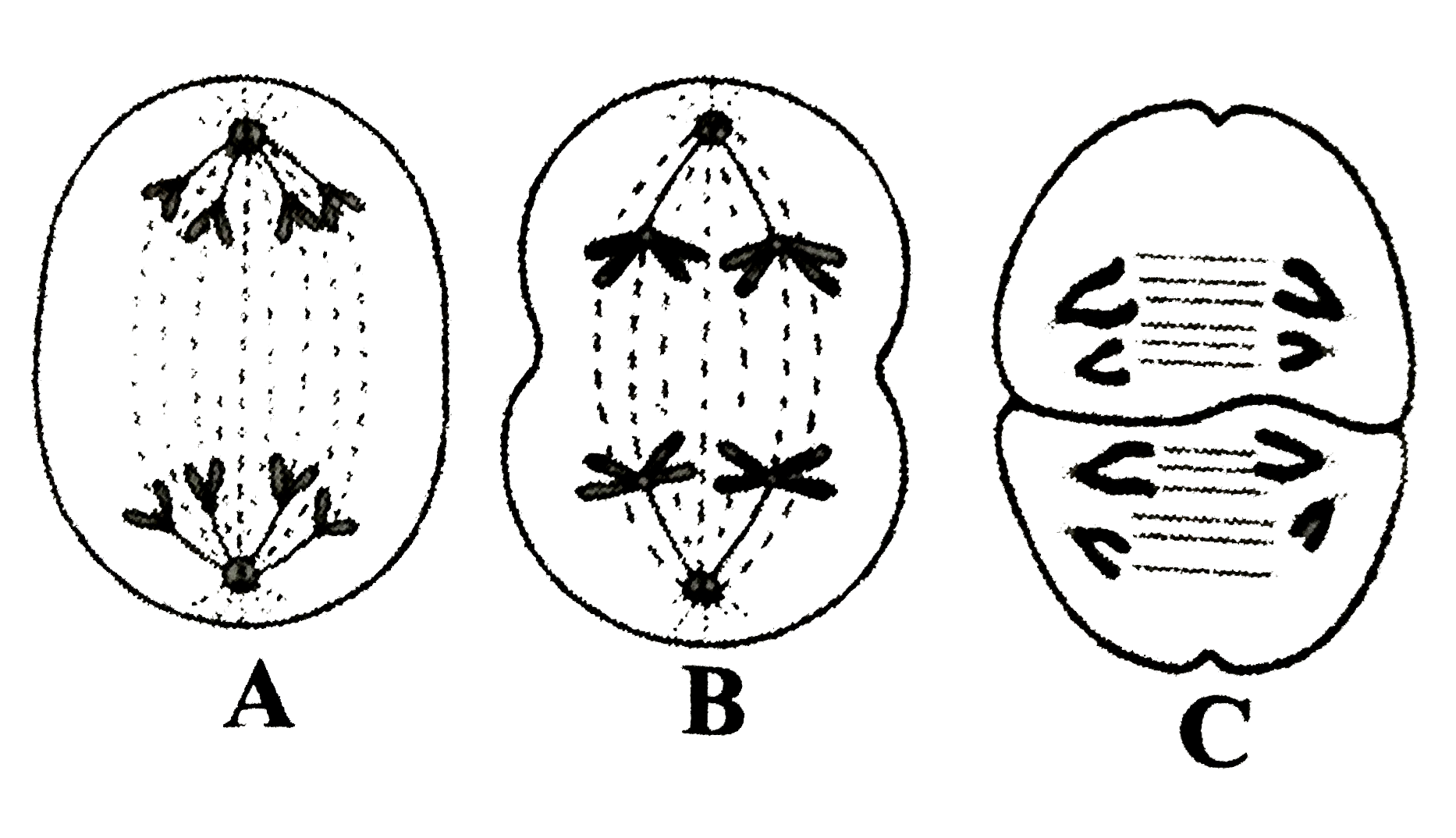A bivalent of meiosis i consists of
two chromatids and one centromere
two chromatids and two centromeres
four chromatids and two centromeres
four chromatids and four centromeres
To answer the question "A bivalent of meiosis I consists of," we can break down the information step by step:
1. Understanding Meiosis: Meiosis is a type of cell division that reduces the chromosome number by half, resulting in four haploid cells. It consists of two main stages: Meiosis I and Meiosis II.
2. Phases of Meiosis I: Meiosis I includes several phases:
- Prophase I
- Metaphase I
- Anaphase I
- Telophase I
3. Prophase I Substages: Prophase I is further divided into five substages:
- Leptotene
- Zygotene
- Pachytene
- Diplotene
- Diakinesis
4. Formation of Bivalents: During the zygotene stage of Prophase I, homologous chromosomes come together and pair up. This pairing is known as a bivalent.
5. Composition of a Bivalent:
- A bivalent consists of two homologous chromosomes.
- Each homologous chromosome is made up of two sister chromatids.
6. Counting Chromatids and Centromeres:
- Since there are two homologous chromosomes and each chromosome has two chromatids, a bivalent will consist of a total of four chromatids (2 chromosomes x 2 chromatids each = 4 chromatids).
- Each chromosome has one centromere, so there will be a total of two centromeres (1 centromere per chromosome x 2 chromosomes = 2 centromeres).
7. Conclusion: Therefore, a bivalent of meiosis I consists of four chromatids and two centromeres.
Final Answer:
A bivalent of meiosis I consists of 4 chromatids and 2 centromeres.
---
- Prophase I
- Metaphase I
- Anaphase I
- Telophase I
- Leptotene
- Zygotene
- Pachytene
- Diplotene
- Diakinesis
- A bivalent consists of two homologous chromosomes.
- Each homologous chromosome is made up of two sister chromatids.
- Since there are two homologous chromosomes and each chromosome has two chromatids, a bivalent will consist of a total of four chromatids (2 chromosomes x 2 chromatids each = 4 chromatids).
- Each chromosome has one centromere, so there will be a total of two centromeres (1 centromere per chromosome x 2 chromosomes = 2 centromeres).
A bivalent of meiosis I consists of 4 chromatids and 2 centromeres.
Topper's Solved these Questions
- CELL CYCLE AND CELL DIVISIONBOOK - NCERT EXEMPLAR ENGLISHCHAPTER - CELL CYCLE AND CELL DIVISIONEXERCISE - Very short Answer type questions
14 Videos
- CELL CYCLE AND CELL DIVISIONBOOK - NCERT EXEMPLAR ENGLISHCHAPTER - CELL CYCLE AND CELL DIVISIONEXERCISE - Short Answer Type questions
13 Videos
- CELL : THE UNIT OF LIFE BOOK - NCERT EXEMPLAR ENGLISHCHAPTER - CELL : THE UNIT OF LIFE EXERCISE - Long Answer Type Questions
1 Videos
- CHEMICAL COORDINATION AND INTEGRATIONBOOK - NCERT EXEMPLAR ENGLISHCHAPTER - CHEMICAL COORDINATION AND INTEGRATIONEXERCISE - Long Answer Type Questions
5 Videos
Similar Questions
Knowledge Check
A bivalent is:
Atwo daughter cells after meiosisBa duplicated chromosome composed of sister chromatidsCpaired homologous chromosomesDa homologous chromosomeIf 2n=4, then identify the figures A,B and C, as per the following codes and select the correct option

Anaphase of meiosis I=(i)
Anaphase of mitosis =(ii)
Anaphase meiosis II =(iii)Aii,i,iiiBiii,ii,iv,iCi,ii,iiiDiii,i,ii
In meiosis :-
View SolutionChromosome number is reduced during meiosis because the process consists of :-
View SolutionArrange the following in descending order
(a) Number of bivalents formed during meiosis of a spore mother of Ophioglossum
(b) Number of chromatids seen on equator at metaphase I in pollen mother cell of Haplopappus gracilis during meiosis
(c ) Number of chromosomes found at one pole after anaphase II during meiosis in butterfly
(d) Total number of chromosomes found in all daughter cells formed during meiosis from one megaspore mother cell in Potato
View SolutionWhich of the following is correct about bivalent?
(i) Bivalents are tetrads.
(ii) A bivalent means 4 chromatids and 2 centromeres.
(iii) One bivalent consists of 2 homologous chromosomes.
(iv) Bivalents form in zygotene.
View SolutionWhen are bivalents of chromosomes first clearly visible in meiosis ?
View SolutionWhich bivalent ion of first transition series show the highest paramagnetism?
View Solution
